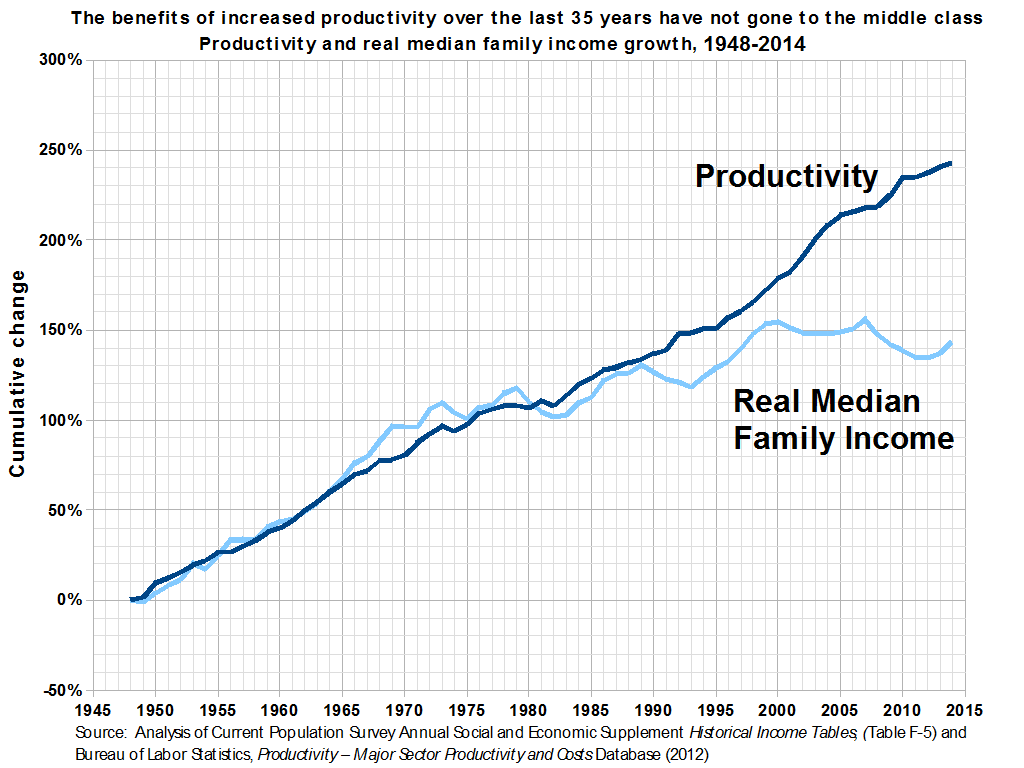Leads to the Proca equation.
No closed form solution, but good approximation that can be calculated by hand with the Hartree-Fock method, see hartree-Fock method for the helium atom.
Bibliography:
www.cbpp.org/wealth-concentration-has-been-rising-toward-early-20th-century-levels-2 shows historical for top 1% and 0.5% from 1920 to 2010.
TODO why is it so hard to find a proper cumulative distribution function-like curve? OMG. This appears to be also called a Lorenz curve.
Wealth Inequality in America by politizane
. Source. Quantum numbers appear directly in the Schrödinger equation solution for the hydrogen atom.
However, it very cool that they are actually discovered before the Schrödinger equation, and are present in the Bohr model (principal quantum number) and the Bohr-Sommerfeld model (azimuthal quantum number and magnetic quantum number) of the atom. This must be because they observed direct effects of those numbers in some experiments. TODO which experiments.
E.g. The Quantum Story by Jim Baggott (2011) page 34 mentions:This refers to forbidden mechanism. TODO concrete example, ideally the first one to be noticed. How can you notice this if the energy depends only on the principal quantum number?
As the various lines in the spectrum were identified with different quantum jumps between different orbits, it was soon discovered that not all the possible jumps were appearing. Some lines were missing. For some reason certain jumps were forbidden. An elaborate scheme of ‘selection rules’ was established by Bohr and Sommerfeld to account for those jumps that were allowed and those that were forbidden.
Quantum Numbers, Atomic Orbitals, and Electron configurations by Professor Dave Explains (2015)
Source. He does not say the key words "Eigenvalues of the Schrödinger equation" (Which solve it), but the summary of results is good enough.Integrations React integration:
- github.com/shakacode/react_on_rails: webpack and server-side rendering
- github.com/reactjs/react-rails Official on the React side only. Demo app linked from package: github.com/BookOfGreg/react-rails-example-app and how it fails: github.com/BookOfGreg/react-rails-example-app/issues/30... The related projects section has some good links:
- shakacode/react_on_rails
- github.com/hyperstack-org/hyperstack transpiles Ruby to JavaScript + React. What could possibly go wrong? :-)
Some key specs:
- SoC:
- name: RP2040. Custom designed by Raspberry Pi Foundation, likely the first they make themselves rather than using a Broadcom chip. But the design still is closed source, likely wouldn't be easy to open source due to the usage of closed proprietary IP like the ARM
- dual core ARM Cortex-M0+
- frequency: 2 kHz to 133 MHz, 125 MHz by default
- memory: 264KB on-chip SRAM
- GPIO voltage: 3.3V
www.physics.udel.edu/~jim/PHYS424_17F/Class%20Notes/Class_5.pdf by James MacDonald shows it well.
And then we can prove the ladder properties easily.
The commutator appear in the middle of this analysis.
www.hep.man.ac.uk/u/forshaw/NorthWest/QED.pdf web.archive.org/web/20200824083133/http://www.hep.man.ac.uk/u/forshaw/NorthWest/QED.pdf
These seem very direct and not ultra advanced, good read.
Quantum Field Theory for The Gifted Amateur by Tom Lancaster (2015) by  Ciro Santilli 37 Updated 2025-07-16
Ciro Santilli 37 Updated 2025-07-16
This didn't really deliver. It does start from the basics, but it is often hard to link those basics to more interesting or deeper points. Also like many other Quantum field theory book, it does not seem to contain a single comparison between a theoretical result and an experiment.
TODO: in high level terms, why is QED more general than just solving the Dirac equation, and therefore explaining quantum electrodynamics experiments?
Also, is it just a bunch of differential equation (like the Dirac equation itself), or does it have some other more complicated mathematical formulation, as seems to be the case? Why do we need something more complicated than
The main high level insight seems to be that The Dirac equation does not work for more than one electron.
Bibliography:
- physics.stackexchange.com/questions/101307/dirac-equation-in-qft-vs-relativistic-qm
- physics.stackexchange.com/questions/44188/what-is-the-relativistic-particle-in-a-box/44309#44309 says:
- physics.stackexchange.com/questions/64206/why-is-the-dirac-equation-not-used-for-calculations
- www.physicsforums.com/threads/is-diracs-equation-still-useful-after-qed-is-developed.663994/
There are unlisted articles, also show them or only show them.

